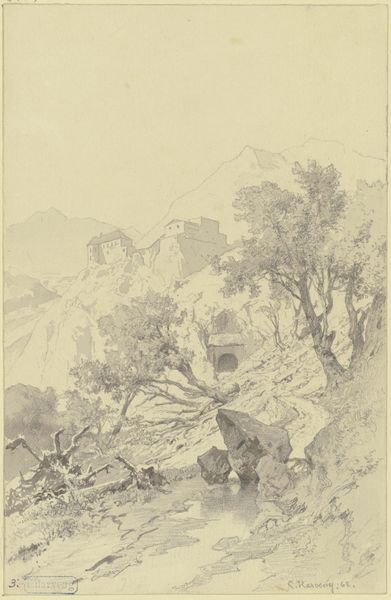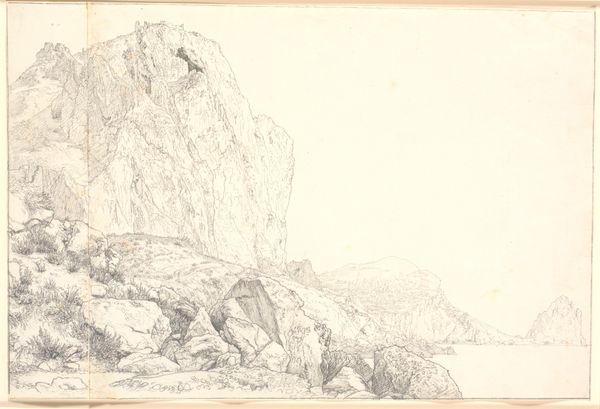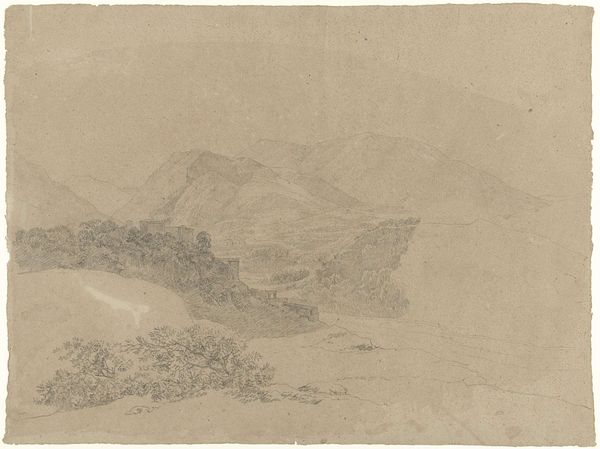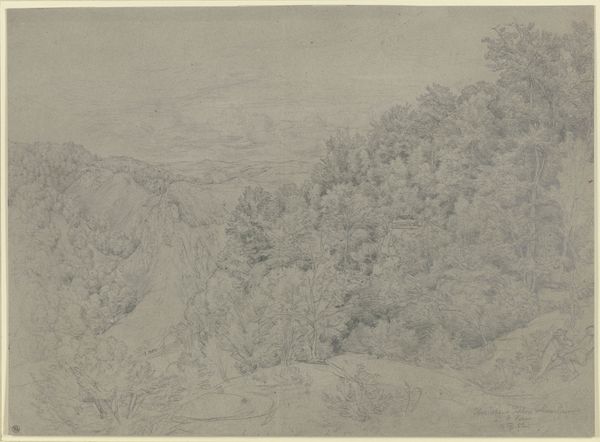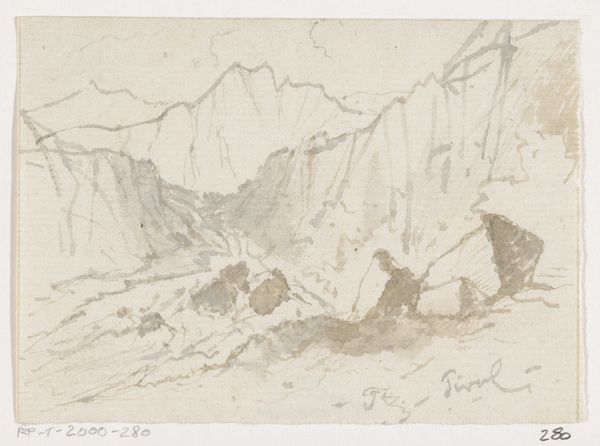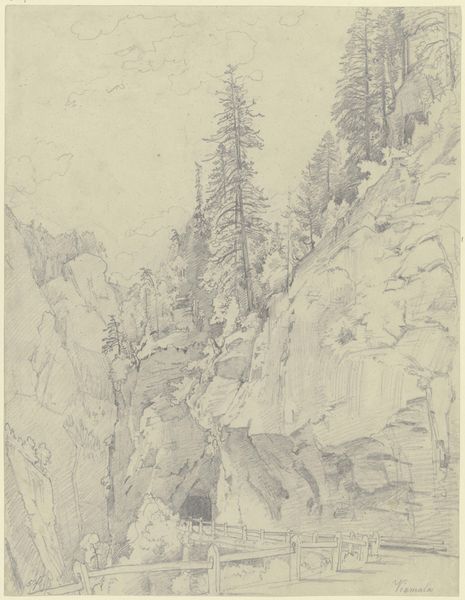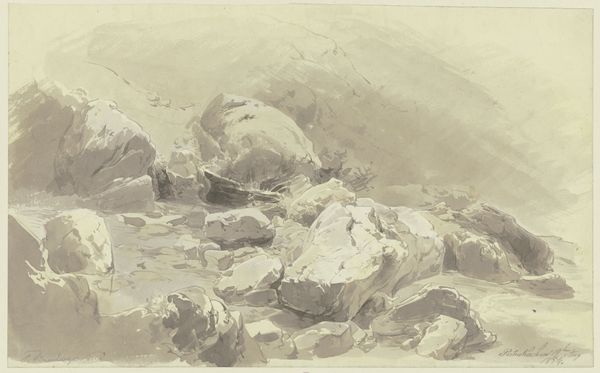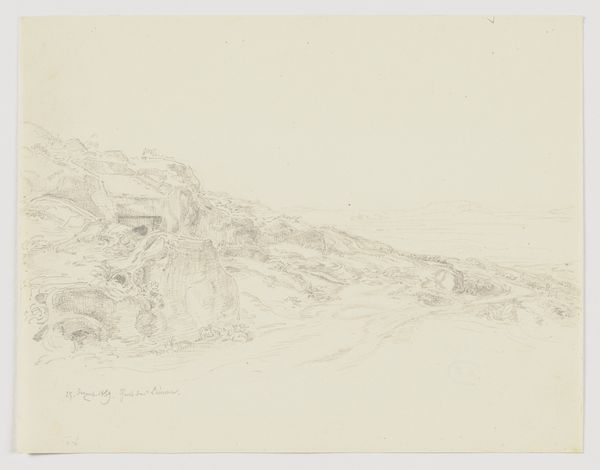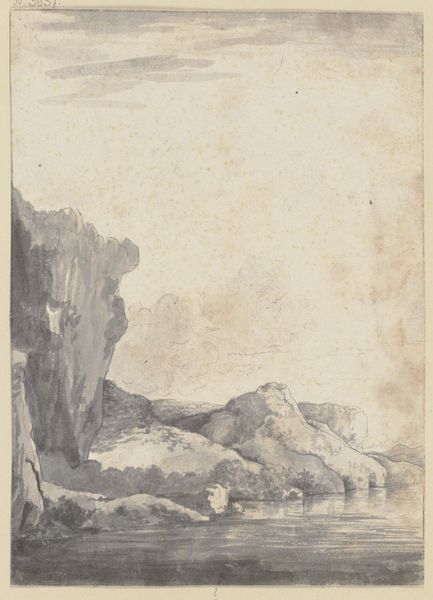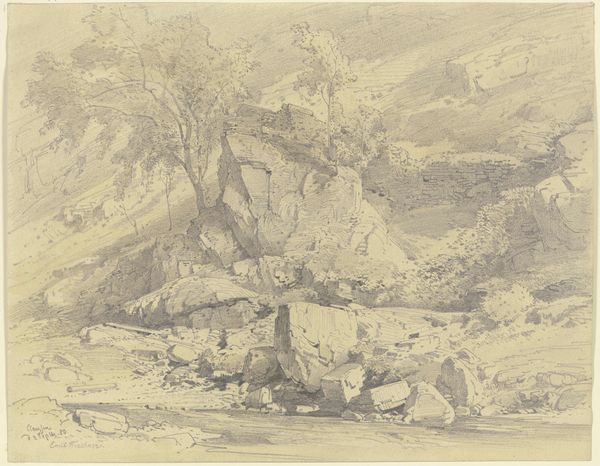
Copyright: Public Domain
Editor: So, here we have Louis Eysen’s “Hillside,” created in 1882 using pencil. There's a haunting quality to the rendering, the textures making the hills appear both solid and ethereal. What symbolic language do you see present in this scene? Curator: The hillside itself is a profound symbol. Mountains, in many cultures, represent obstacles, yes, but also spiritual ascent and the permanence of memory. Note the sharp contrasts, though it's just pencil. Do you get a sense of struggle depicted here, or perhaps resilience in the face of hardship? Editor: I do see that struggle now that you point it out – the way the lines almost claw at the paper to create those dark patches of shadow. Curator: Exactly. Shadow and light often embody opposing forces – good and evil, known and unknown. Eysen seems less interested in precise geological rendering and more focused on capturing an emotional or even psychological state through the land. Where does the path lead, if there is one at all? What stories do these hills remember? Editor: That’s fascinating. I was initially focused on the surface textures, but thinking about the “memory” of the landscape opens up so many new ideas. Curator: Visual symbols, deeply rooted in our collective unconscious, create narratives that transcend time. We continue to grapple with such questions that become ingrained in our visual storytelling, the journey, the climb, and what awaits us at the summit of our own symbolic landscapes. Editor: This has given me so much to consider. Thanks for sharing such profound interpretations. Curator: The pleasure was mine. The beauty of art lies in its continuous unfolding and revealing.
Comments
No comments
Be the first to comment and join the conversation on the ultimate creative platform.
